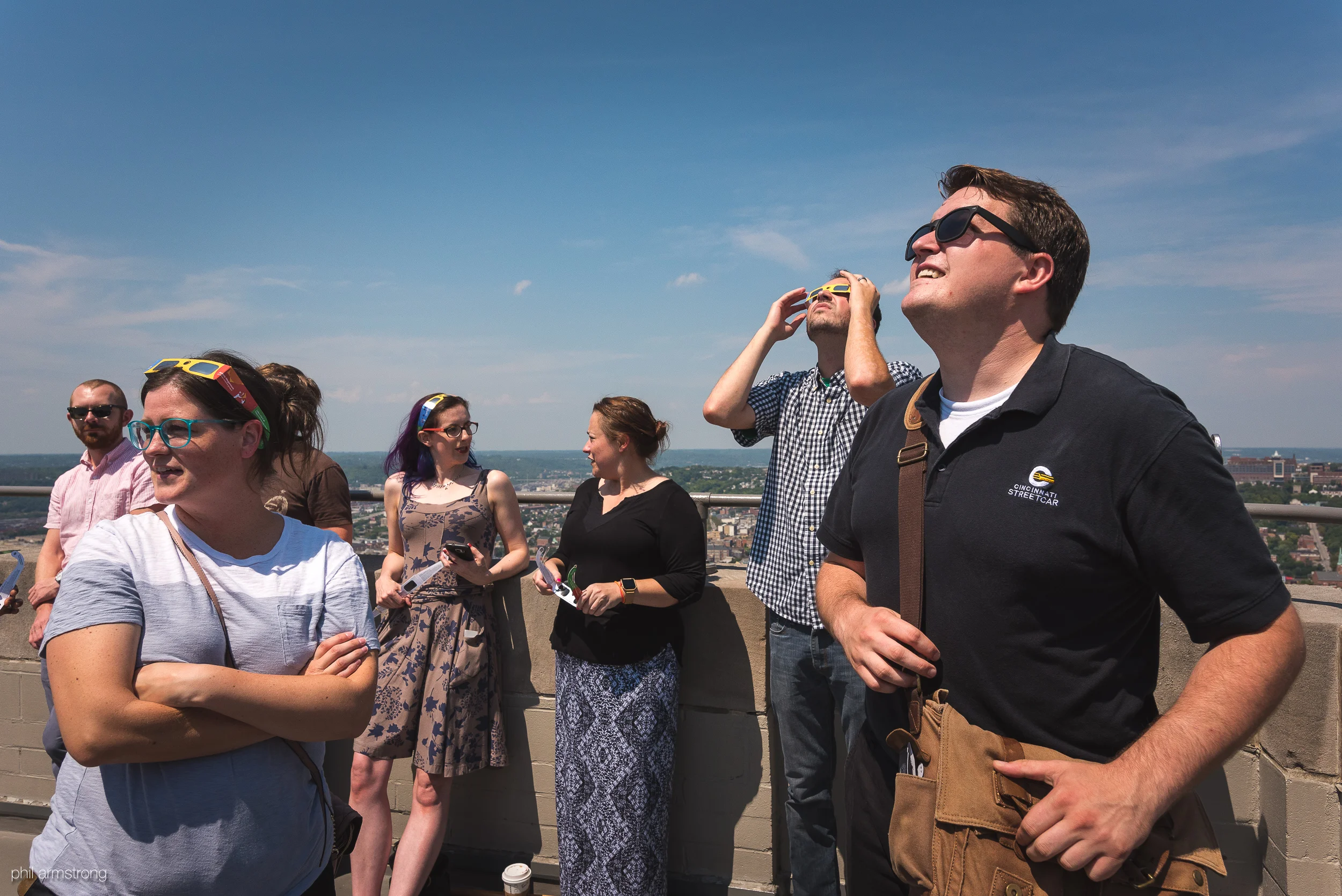The Great American Eclipse happened today. From the West Coast to the East Coast, the path of the moon’s shadow bisected the country in nearly-even northern and southern halves. According to the extremely-topical website, greatamericaneclipse.com, total eclipses are said to be “unlike anything you’ve seen in your life” and “an amazing celestial coincidence,” even venturing so far as to claim it’s one of the most emotional experiences a person can have. It's written in a language familiar to those who've read old newspapers describing P.T. Barnum’s circus or other fantastical spectacles of passing ages. In a world of ever-advancing technology and ideals, that same loquacious excitement and sensational verbiage is immune to the passage of time.
While it’s no surprise that a website dedicated to this event boasts grandiose claims such as those above, it was, in fact, spectacular. Cincinnati was unfortunately not within the path of totality, but it still experienced 91% of the sun blocked from view by Earth’s moon.
"...And Great Enough in its Magnitude to Overshadow with Canopy ANY TEN SHOWS on THIS CONTINENT"
-Ad from the Cincinnati Enquirer, September 17, 1875
I wasn’t fortunate enough to get eclipse glasses in time for this event due to poor planning on my part. To mitigate remorse, I convinced myself that I wouldn’t have necessarily enjoyed staring directly into a filtered, darkened sun; despite myriad SPF options, I reasoned that a rectangular sunburn around my eyes would have adverse effects on my appearance despite preserving my eyesight to witness history. Vanity, it turns out, adequately serves as a makeshift, shallow excuse to circumvent self-condemnation.
Quietly rueing my life choices, I sought a Plan B. Despite receiving mixed information, reading about the damage DSLRs receive when attempting unprotected shots of the sun ruled out my photography options. Since I didn't know with absolute certainty if my camera would be ruined, I opted to play it safe. But if I couldn’t stare directly into the sun with neither eye nor lens, what on Earth would I do during this historic event?
Then, a bright idea came to me. I would do precisely that: I would look on Earth.
The idea was light years better than photographing the sun. My 6th floor apartment wouldn’t work, though. Greater elevation was needed to properly witness the event’s effects on our landscape. I wanted to see the world from its highest vantage point during the peak of the eclipse at approximately 2:30 PM. Again rueing my life choices for not becoming a helicopter pilot, a solitary option sprung to mind. I hopped the streetcar to Fountain Square with my camera bag in tow.
As the moon slid into position to darken the sun, the button to the 45th floor in the Carew Tower’s elevator illuminated under my finger. Four flights of stairs and four dollars later, I landed atop Cincinnati’s ersatz Everest to observe the city during the Great American Eclipse.
The temperature noticeably dipped as the afternoon wore on and the moon drew nearer to eclipsing the vast majority of the sun. I arrived at 12:30 PM and almost immediately met a woman who graciously gave me a pair of eclipse glasses. My rueing had been in vain.
Cincinnati history is important to me. It is something I actively incorporate into my daily life, and something I both read about and photograph with the same regularity. This event was part of its modern history, and I had the privilege to be part of it. Several friends and my father joined me while I was up there, and together we looked down upon our haven as the rest of the world looked up toward their heaven.
Below are photos from the city's highest public point on August 21st, 2017 at the peak of the Great American Eclipse in Cincinnati at 2:30 PM. All four corners and all sides were photographed within 60 seconds.
Below are photos of the observation deck and its observers from the time of my arrival to the peak of the eclipse, totalling two hours.
This was, without a doubt in my mind, the best vantage point to witness an eclipse in Cincinnati. I would be hard-pressed to find a better spot. The next eclipse will occur in 2024; better start saving for a zeppelin now, I suppose.











































